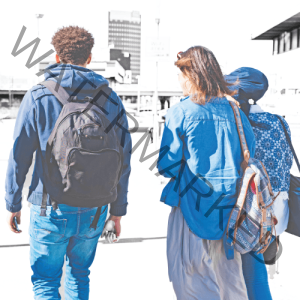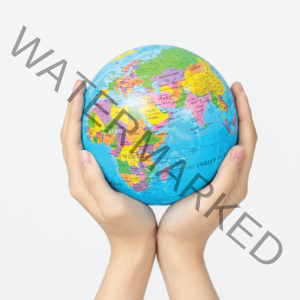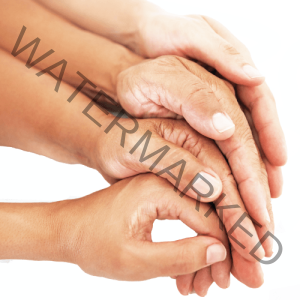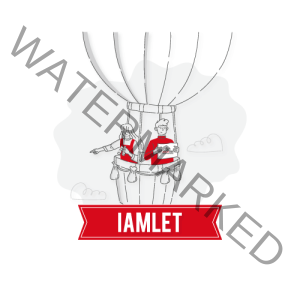- Atilla Tiriyaki
- Average Reading Time: 10 minutes
- Community, Special Groups
- articles, atillat
The internet, smartphone apps, and social media services have made it possible to speak to and make real connections with people, sometimes thousands of miles away. Then consider that in 2019, it was estimated that over 1 billion people travelled overseas. Many are venturing further than their parents or grandparents ever did, mainly due to affordable airfares and the desire to experience all the world has to offer. Finally, factor in those people on gap years, backpacking or studying overseas.
Meeting that special someone from a different country than your own happens a lot more frequently than it ever did in the past. However, practical matters will need to be discussed once you have fallen in love, such as which country will you live in going forward? What are the routes or potential obstacles for living together? And when is the right time to put any plans made into action?
The restrictions and requirements imposed by a government might be financial, specific to a person’s education, or simply the length of a relationship. For example, if a person lived in the USA and fell in love with someone from a different state, the barriers would only be financial. Legal obstacles exist more when two people come from different countries, where immigration restrictions apply. Any partners with previous criminal convictions may have further complications when applying. Especially given that most countries have strict rules around the treatment of felons; however, the restrictions will often be based on the severity of the crimes committed.
Members of the LGBTQ+ community also have to consider the laws and rights regarding their sexuality or gender identity in any given country. Especially how that country treats the community and whether same-sex relationships are recognised within the law.
Assuming that same-sex relationships are recognised, typically, the available routes are:
- Visitor Entry Requirements – any given country will outline whether visitors from certain countries are required to obtain a visa or not. Required Visas would usually be determined before their arrival. They would also likely discover specific terms of permitted entry, such as how long a person is allowed to stay. For example, an American citizen can remain in the United Kingdom (UK) for up to six months without a visa in any given twelve-month period. The visit, however, can only be for personal travel, meaning they would not be allowed to work whilst in the UK. If money is not a significant obstacle, then this route would be most likely for those in new relationships, spending time together without having to go down the various paths that require a long-term legal commitment
- Temporary/Working Visas – nearly all countries worldwide publish a list of skills or professions in demand within that country. Suppose a person’s professional background and skills match those listed. The chances of applying and obtaining a working visa will significantly increase. Finding an employer in the chosen country willing to sponsor a visa application could also be another route. One potential downside to a working visa is that often they are dependent on the area, region, or state where the demand is needed. For example, one partner lives in Sydney, Australia, and the other partner has a skillset in demand within Perth. Though they will be living in the same country, they might not live within the same city using this route. If the partners can support one another financially, many countries offer short and long-term dependents visa options. However, the length of the relationship will be a significant contributing factor. The student visa route could be viable for partners where English is not their first language. Student visas can be granted from a few months to four years. For example, in the UK, there is a prospective student visa where an individual who wishes to study in the UK can come for up to six months while they research and select their preferred course
- Residency or Citizenship through marriage or via a civil partnership – once a person is sure that they have met the one and decide to get legal recognition for their relationship. The first thing would be to determine what country they want to live in and whether it would be short or long term. Also, whether these types of same-sex unions are recognised, if so, then the marriage or civil partnership route could be a viable option for most couples. In 2020, 68 or 29.2% of all countries worldwide recognise some form of same-sex marriage or unions. Again, the rules will vary by country. However, for many, there will be a minimum amount of time individuals must have been in a relationship before they can apply. The minimum length of the relationship could be anything from twelve months up to five years. Even if a person is eligible, they are not always guaranteed an indefinite right to remain in that country. Some countries will grant a temporary visa, say for two years, and after that time, they are then able to apply for a more permanent status
- Asylum –a route if someone originates from a country known to be hostile towards members of the LGBTQ+ community. Especially if they fear for their lives, seeking political asylum is another option. There are many risks and factors to consider when going down the asylum route, such as knowing whether your chosen country accepts asylum applications based on those grounds, when and how to apply (especially for personal safety), and most importantly, that once a person makes an application, the reality that it will be difficult for them to go back to their home country to visit friends and family in the future
Whatever the preferred route, it will likely take time, often be somewhat intrusive, and require a financial commitment from both partners.
The journal’s purpose is to keep notes of when, where, and how long each meeting took place. Each encounter should be logged, and at the same time, ensure that all supporting evidence is kept. The diary should capture all information from hotels, flight details, and even restaurants. You might not like your picture being taken; however, it is essential that you still take the occasional photograph that has both a date and timestamp. The date and timestamping can likely be achieved by uploading the picture to one of the many available social media sites.
You might ask yourself that this tip seems somewhat strange and too early in a relationship. However, imagine being asked to prove how long you have been together in the future. How would you do it? Being prepared could save a lot of time and effort. Even if the relationship fails in the end, you still have an account of much happier times. It does not take long, and once you start the process, it quickly becomes second nature.
Not all of the documents you collect or photographs you take might be considered evidence. However, the more you have, the more you can support the status of any relationship. When booking hotels and making reservations, use both names on the confirmation whenever appropriate. When visiting each other, keep booking confirmations, tickets, and boarding cards. Without the diary, you would likely forget many of your many meetings and what you did, leaving gaps and wasting an opportunity to provide concrete evidence.
When keeping a diary of the relationship, ideal supporting documents include:
- Travel details – flight details, passport stamps, boarding passes, train tickets etc
- Accommodation bookings – hotel, apartment bookings, ensuring that you include both names when making any bookings
- Reservations, attractions parks – any place visited that ideally includes the partners’ names
- Photographs – especially ones that are dated and timestamped through social media sites
- If travelling abroad, using the “check-in” feature when arriving in your partners country and any places you visit
Any documents kept should be originals and should not have been amended or tampered with in any way.
When is the right time to start any immigration process? The question depends on the couple and how they feel about one another. Many long-term relationships were formed after knowing one another for only a few weeks, so there is no formula on when is right. Ultimately it comes down to when all those involved feel it is the right time for them. In reality, the longer you are together, physically, in person and face-to-face, the easier it will become in any of the options outlined in the previous sections.
Many of the steps and processes can be started early in the relationship. However, waiting periods or temporary statuses may be required until the required time has been achieved. Suppose the relationship has only ever been a virtual one. Then the first step should be to meet each other before anything else. No matter how a person feels or loves their partner, most countries will expect that you have met each other physically beforehand.
Cross-border relationships can create issues and problems, likely ones that you will have never faced before. However, they can also be extraordinary, and the benefits will likely outweigh any problems or issues encountered. Meeting someone you love and with whom you cannot imagine being without is special. Ultimately, where they come from should be one of the last things you should worry or think about when falling in love.
Love is love. It may seem daunting, but the first question anyone should ask themselves before considering any immigration routes. Can I imagine a world without this person in my life? If the answer is no, you know you can overcome any obstacles you face. Whatever decisions you take or the process you undertake, I wish you the best of luck. I hope that you and your partner are living in the same country one day, happy and healthy
LGBTQIA+ REFUGEES
More from Gayther
Discover all of the exciting and entertaining articles written by people from the worldwide LGBTQIA+ community, sharing their stories, opinions and experiences in their own style and from their unique perspectives























